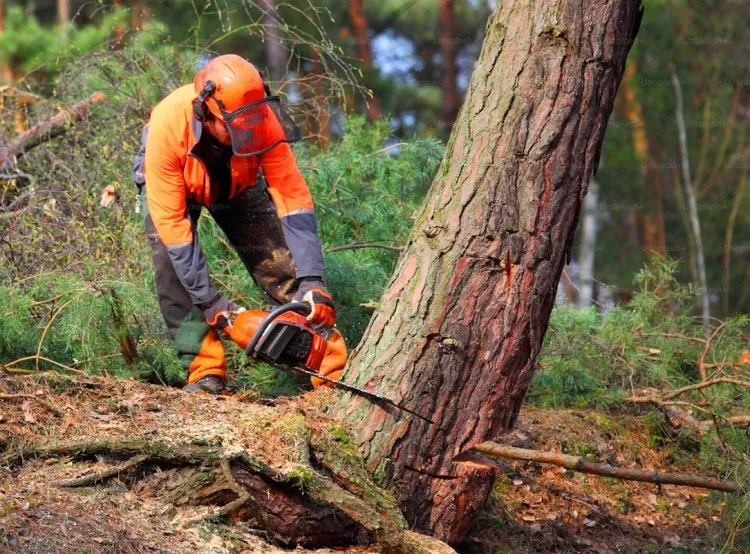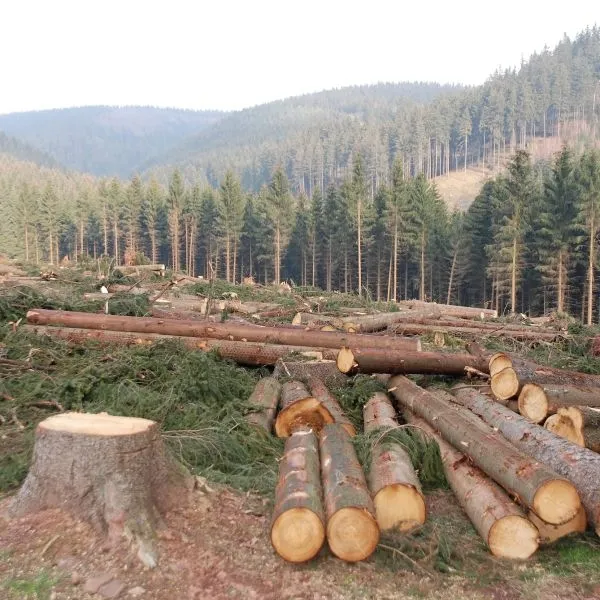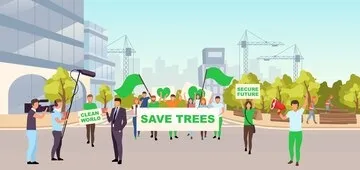"Deforestation: The Silent Crisis Threatening Our Planet"

Deforestation: A Growing Threat to Our Planet
Forests are often called the lungs of the Earth, playing a crucial role in sustaining life by producing oxygen, absorbing carbon dioxide, and maintaining ecological balance. They provide shelter to countless wildlife species and serve as a lifeline for millions of people around the globe. However, deforestation has emerged as one of the most pressing environmental challenges of our time. The rampant destruction of forests due to agricultural expansion, urbanization, and industrial activities has led to severe consequences for biodiversity, climate stability, and human well-being. If left unchecked, deforestation could push our planet toward an irreversible environmental crisis.

Major Issues Caused by Deforestation
1. Loss of Biodiversity
Forests are home to more than 80% of terrestrial species, offering a habitat for countless plants, animals, and microorganisms. The destruction of forests leads to the displacement and extinction of various species, disrupting delicate ecosystems. With their habitats shrinking at an alarming rate, many endangered species, such as orangutans, tigers, and countless birds, face the risk of extinction. The loss of biodiversity affects ecosystems in ways we may not fully comprehend, weakening the natural balance that sustains life.
2. Climate Change Acceleration
Forests play a vital role in regulating the Earth’s climate. Through the process of photosynthesis, trees absorb carbon dioxide, one of the leading greenhouse gases responsible for global warming. When forests are cleared, not only is this natural carbon sink lost, but large amounts of stored carbon are released into the atmosphere, exacerbating climate change. Studies indicate that deforestation contributes to nearly 15% of global carbon emissions, making it one of the primary drivers of climate change. As global temperatures rise, extreme weather patterns, including hurricanes, droughts, and heatwaves, are becoming more frequent and severe.
3. Soil Erosion and Desertification
Forests help maintain soil stability by preventing erosion through their root systems. When trees are removed, the topsoil becomes vulnerable to erosion by wind and water. This leads to a decline in soil fertility, making land unsuitable for agriculture and resulting in desertification. Areas that once flourished with rich biodiversity become barren landscapes incapable of supporting life. The consequences are particularly severe in regions where communities depend on farming for their survival, leading to food insecurity and economic hardships.
4. Disruption of the Water Cycle
Forests play a key role in regulating the water cycle by absorbing and releasing moisture through transpiration. Deforestation disrupts this cycle, reducing rainfall levels and leading to prolonged droughts in some areas while increasing flood risks in others. The loss of tree cover also affects freshwater sources by reducing water retention in soil, leading to decreased groundwater levels. The long-term impact of this disruption can be devastating, affecting agriculture, drinking water supplies, and entire ecosystems that depend on a stable water cycle.
5. Threat to Indigenous Communities
Forests are not just a source of ecological wealth but also home to many indigenous communities who have lived in harmony with nature for centuries. Deforestation forces these communities out of their ancestral lands, stripping them of their cultural heritage and means of survival. The loss of forests leads to displacement, increased poverty, and conflicts over land rights. As a result, indigenous groups often struggle to preserve their way of life in a world increasingly driven by commercial interests.

Possible Solutions to Deforestation
1. Afforestation and Reforestation
One of the most effective ways to combat deforestation is through afforestation (planting trees in barren lands) and reforestation (restoring lost forests). Large-scale tree-planting initiatives can help mitigate climate change, restore biodiversity, and improve soil quality. Governments and organizations worldwide have launched afforestation programs, but the success of these efforts depends on long-term commitment and sustainable management.
2. Sustainable Agriculture and Land Use
Agriculture is one of the leading causes of deforestation, often due to the expansion of farmland for crops and livestock. Implementing sustainable agricultural practices, such as agroforestry (integrating trees with crops and livestock), crop rotation, and organic farming, can reduce the need for forest clearance. Precision farming, which uses technology to optimize land use, can also minimize environmental damage while ensuring food production remains efficient and sustainable.
3. Strengthening Legal Frameworks and Policies
Strict legal measures must be implemented to prevent illegal logging and regulate land use. Governments should enforce environmental laws that restrict deforestation in protected areas and promote sustainable forest management. International cooperation is essential in combating deforestation, as global supply chains often drive demand for timber, palm oil, and other products linked to forest destruction. Certifications such as the Forest Stewardship Council (FSC) can help consumers make responsible choices and encourage companies to adopt sustainable practices.
4. Reducing Reliance on Deforestation-Linked Products
The demand for paper, timber, palm oil, and other forest-derived products has fueled large-scale deforestation. Shifting toward sustainable alternatives, such as recycled paper, bamboo, and plant-based materials, can help reduce pressure on forests. Governments and businesses must invest in sustainable industries that promote environmental conservation while meeting economic needs.
5. Public Awareness and Community Involvement
Educating people about the consequences of deforestation and encouraging community participation in conservation efforts can drive meaningful change. Individuals can contribute by supporting reforestation programs, reducing paper and wood consumption, and advocating for sustainable policies. Community-led conservation initiatives, where local populations actively participate in forest protection, have proven successful in preserving natural habitats and preventing deforestation.

Conclusion
Deforestation remains one of the most critical environmental challenges of our time, threatening biodiversity, accelerating climate change, and disrupting the delicate balance of ecosystems. However, this crisis is not insurmountable. Through afforestation, sustainable land-use practices, legal enforcement, and increased public awareness, we can curb deforestation and restore the planet’s green cover. The responsibility to protect our forests lies not only with governments and organizations but also with individuals who can make a difference through their choices and actions. By working together, we can ensure that future generations inherit a world where forests continue to thrive, sustaining life in all its diverse forms.
What's Your Reaction?

















